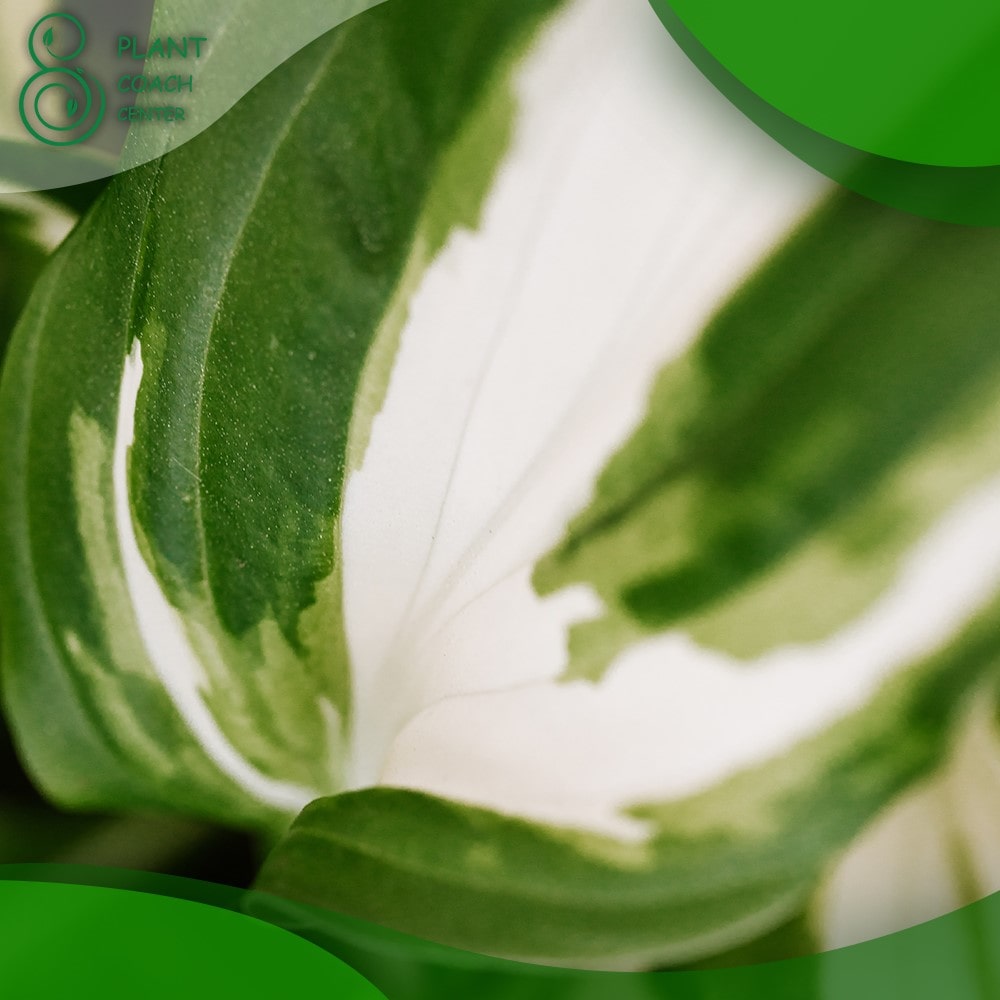When to Cut Down Hostas
Nestled within the lush canvas of a garden, hostas stand as steadfast sentinels of beauty, captivating gardeners and enthusiasts with their vibrant foliage and elegant presence. These versatile plants, celebrated for their resilience and adaptability, weave tales of seasonal transformations that demand our attention and care.
As the seasons dance and the curtain of time shifts, knowing when to wield our pruning shears becomes an art form that orchestrates the delicate balance between nurturing growth and embracing dormancy. Welcome to a horticultural journey where we uncover the enigmatic rhythms of hosta life cycles and decode the secrets of timing their trims.
From the enchanting emergence of spring’s tendrils to the bittersweet embrace of autumn’s departure, we delve into the chapters that compose the narrative of when and why we cut down hostas. So, wander with us through the chapters ahead, where each turn of the page reveals insights into sculpting flourishing foliage and sustaining the heart of your garden’s hosta tapestry.
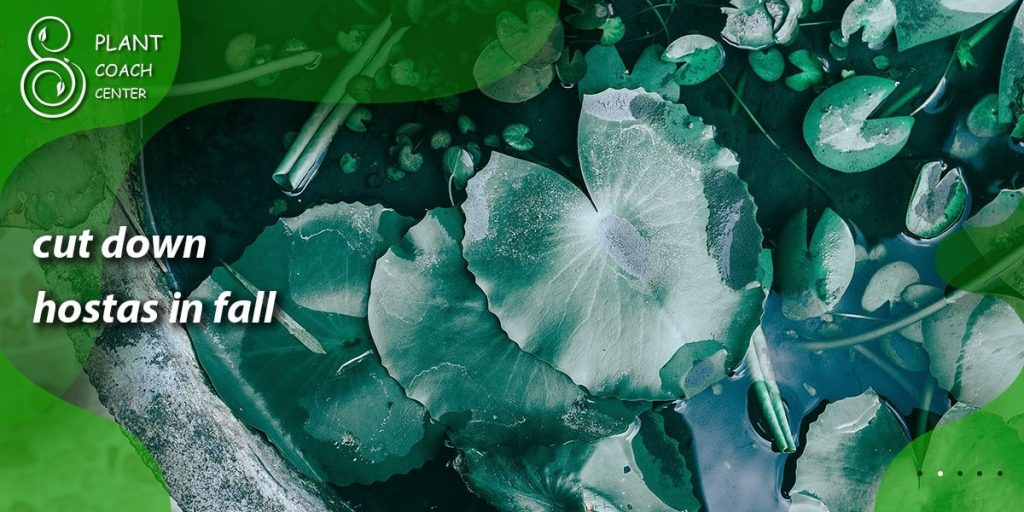
Seasonal Shifts: Understanding Hosta Growth Cycles
Hostas, those verdant wonders that grace our gardens, embark on a mesmerizing journey of growth and renewal as the seasons ebb and flow. To become masterful stewards of these botanical treasures, unraveling the intricacies of their growth cycles is essential.
Spring’s Awakening: New Beginnings and Vigorous Shoots
As the last vestiges of winter relinquish their hold, hostas rouse from their slumber with the arrival of spring. Tender shoots emerge from the earth, heralding the start of a new growing season.
This is an opportune time to assess the health of your hostas and clear away any debris that may have accumulated over the winter months. While pruning isn’t the primary focus in spring, gentle tidying can promote better air circulation and light penetration for emerging foliage.
Summer Splendor: Lush Growth and Flourishing Foliage
With the sun’s embrace, hostas bask in their summer glory. Leaves unfurl into a mesmerizing array of shapes, sizes, and hues. This season marks a period of rapid growth, making it a fantastic time to witness the full beauty of these plants. Pruning during summer is generally minimal, involving the removal of any dead or discolored leaves to maintain the plant’s aesthetic appeal and prevent disease.
Autumn’s Transition: Fading Beauty and Preparing for Rest
As summer wanes, hostas gracefully transition into autumn attire. Their once-vibrant leaves may exhibit signs of wear, fading into a soft, rustic palette. This is the juncture where knowledge of timing becomes crucial. To prepare hostas for the impending winter slumber, pruning can be initiated. Trimming away spent flower stalks and removing yellowing leaves helps channel the plant’s energy toward storing nutrients for the colder months ahead.
Winter’s Rest: Dormancy and Contemplation
With the onset of winter, hostas withdraw into a state of dormancy. The above-ground foliage recedes, leaving behind a silent landscape. While cutting back hostas entirely isn’t necessary, removing heavily damaged leaves can prevent potential pest havens and improve the plant’s overall aesthetics during the dormant phase.
Autumn Elegance: Timing Your Hosta Pruning in Fall
As the sun-dappled days of summer give way to the crisp embrace of autumn, the choreography of your garden takes on a new rhythm. Amid this changing backdrop, hostas offer a final display of their captivating foliage before the winter curtain falls. The art of timing becomes a delicate dance during this season, particularly when pruning your hostas.
The Golden Rule of Late-Season Pruning
Timing is everything when it comes to pruning hostas in the fall. The general guideline is to wait until after the first light frost has blackened the foliage. This frost signals that the hosta’s growing season has officially ended, prompting the plant to prepare for dormancy. Pruning too early risks encouraging new growth that will need more time to mature before the cold weather sets in.
Trimming Tips for Autumn Hosta Care
Once the frost has worked and the hosta leaves have darkened, it’s time to begin pruning. Begin by gently cutting back the foliage to a few inches above the ground. While it might feel drastic, this careful trimming encourages the plant to divert energy from its leaves into the roots, where it will be stored for the next season’s growth. Dispose of the trimmed leaves to prevent potential disease and pest issues.
Mindful Maintenance: Preparing for Winter
Autumn pruning isn’t solely about aesthetics—it’s a vital step in ensuring the overall health of your hostas. Trimming away spent leaves reduces the risk of harboring pests and diseases during the dormant months. Additionally, the absence of dead foliage can prevent the accumulation of moisture that might lead to rot, especially in regions with harsh winters.
A Farewell to Foliage, a Promise of Renewal
Pruning hostas in the fall is a gentle farewell to the vibrant foliage that has graced your garden throughout the year. It’s also a promise of renewal, as the plant stores up nutrients and energy to fuel the emergence of fresh shoots in the coming spring. By embracing the autumn elegance of hosta pruning, you’re playing a crucial role in the plant’s lifecycle, nurturing its vitality, and setting the stage for yet another season of stunning growth.
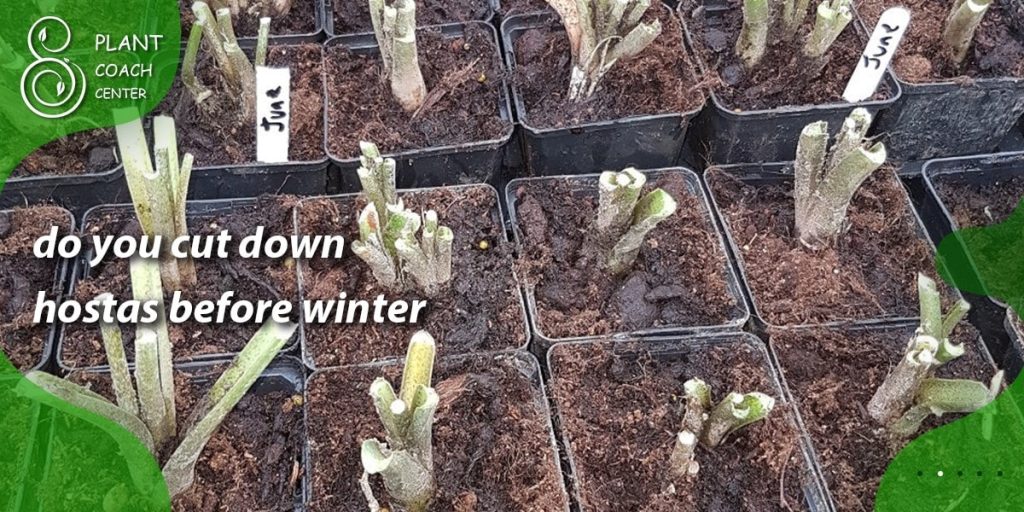
Spring Awakening: Pruning Strategies for the New Growing Season
As the frost retreats and the world awakens from its winter slumber, gardeners are greeted by the enchanting reemergence of nature’s beauty. Among the botanical stars of this springtime spectacle are hostas, poised to unfold their lush foliage once again. To ensure these graceful plants thrive throughout the upcoming growing season, mastering the art of spring pruning is essential.
Timing is Key: Pruning in the Early Spring
Spring is a season of renewal, and your hostas are no exception. As the first signs of growth appear—tiny shoots pushing through the soil—it’s time to turn your attention to their care. Early spring is the ideal window for pruning, as the young shoots are still developing and can benefit from strategic trimming.
Strategic Pruning for Spring Success
When embarking on your spring pruning journey, focus on the following strategies:
Remove Winter Wear and Tear: Gently remove any dead or damaged leaves that have lingered through the winter. This tidying up enhances the plant’s appearance and prevents potential disease and pest issues.
Encourage Airflow: As the hosta foliage begins to unfurl, thin out crowded areas. Adequate spacing between leaves promotes better air circulation, reducing the risk of fungal diseases.
Divide and Conquer: If your hostas have become crowded or overgrown, spring is an opportune time to divide them. Carefully dig up the plant, separate the clumps, and replant them with ample space to flourish.
Foster Vigorous Growth: To encourage the development of healthy, robust leaves, consider removing some of the smaller shoots at the base of the plant. This redirects the plant’s energy toward fewer, more substantial leaves.
Cautious Considerations: Pruning with Precision
While spring pruning offers myriad benefits, it’s crucial to approach the task with care. Be mindful not to over-prune or remove too much foliage, as hostas require their leaves to produce energy through photosynthesis. Aim to balance tidying and allowing the plant to thrive naturally.
A Promise of Splendor: Investing in Spring Pruning
As you sculpt your hostas during the spring awakening, you’re investing in the promise of a season brimming with splendor. You’re setting the stage for a verdant tapestry that will weave its magic throughout your garden by providing your plants with a clean slate to grow and flourish. So, grasp your pruning shears with a sense of purpose and join nature in celebrating spring’s symphony of renewal.
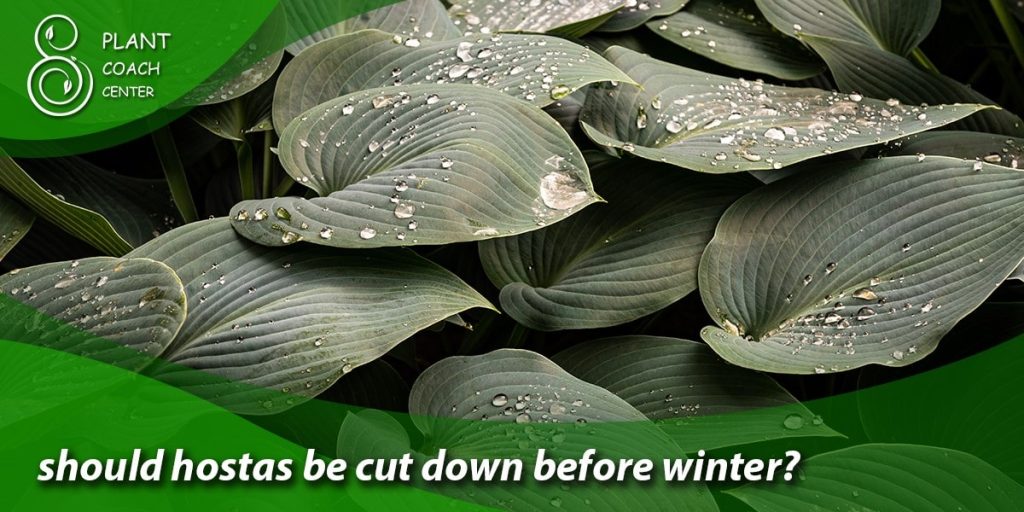
Fading Beauty: Managing Post-Bloom Hosta Care
The crescendo of the blooming season graces our gardens with a brief but dazzling spectacle, and hostas are no strangers to this enchanting performance. As their blossoms gracefully bow out, they make way for a new chapter in their lifecycle. Managing post-bloom care for hostas is a thoughtful process that can impact the plant’s vitality and the overall health of your garden.
Bid Adieu to Blooms: The End of the Flower Show
The blossoms of hostas are often overlooked in favor of their lush foliage, but they carry their unique charm. After the floral display has run its course, the plant directs its energy towards other vital processes. This is the cue to shift your focus towards ensuring the hosta’s continued well-being.
Gentle Pruning for Post-Bloom Tidying
As the blooms fade and their petals fall, consider pruning the spent flower stalks. This not only maintains the plant’s aesthetic appeal but also prevents it from diverting energy into seed production. By redirecting this energy towards leaf growth and root development, you’re nurturing the overall health of the hosta.
Maintaining Foliage Vigor: A Balancing Act
While pruning is a part of post-bloom care, it’s essential to exercise moderation. The leaves of hostas continue to play a crucial role in photosynthesis, generating energy that fuels the plant’s growth and sustenance. As you remove faded flower stalks, take care not to remove too much foliage, allowing the leaves to continue their vital work.
Feeding and Nurturing: Post-Bloom Nutrient Boost
After the blooming spectacle, hostas benefit from a little extra nourishment. Consider providing a balanced, slow-release fertilizer to support their growth and prepare them for the challenges of the upcoming seasons. Adequate nutrients enhance the plant’s ability to produce robust leaves and store energy for future flowering.
Patience and Prudence: A Pragmatic Approach
Managing post-bloom hosta care requires both patience and prudence. Allow the plant’s energy to shift naturally from its blossoms to its leaves and roots. Observe the plant’s response to pruning and feeding, and adjust your care routine accordingly. With your attentive touch, the hosta’s fading beauty can seamlessly transition into a renewed vitality that carries it through the seasons to come.
Winter Wisdom: Leaving Hostas Standing or Cutting Them Back?
As winter’s icy breath blankets the landscape, the garden’s vibrant inhabitants retreat into a state of dormancy. Among these steadfast residents are hostas; their once-lush leaves are now a memory of the past season’s splendor. Should you leave these sentinel plants standing tall or trim them back in preparation for the frosty months ahead? This decision rests at the crossroads of aesthetics, plant health, and ecological considerations.
Leaving Hostas Standing: A Winter Wonderland
Opting to leave hostas standing through the winter can offer a picturesque scene reminiscent of a snowy wonderland. The textured, frost-kissed foliage adds depth and interest to the garden’s winter landscape. This approach can also provide shelter for small creatures seeking refuge from the cold, such as insects and birds.
Benefits of Standing Hostas: Ecological and Aesthetic
Leaving hostas intact over winter contributes to the ecosystem subtly yet significantly. The dried leaves create a protective layer over the soil, helping to insulate it from temperature fluctuations and prevent erosion.
In addition, the textured foliage can capture and hold snow, acting as a natural mulch that provides moisture when it melts in spring. Aesthetically, the standing hostas add sculptural beauty to the winter garden, their forms becoming artistic silhouettes against the snowy backdrop.
Trimming Hostas Back: A Neat and Tidy Approach
On the other hand, choosing to trim hostas back before winter can have its advantages as well. Pruning removes the dead and decaying foliage, reducing the risk of diseases and pests that might overwinter in the plant debris. Additionally, a trimmed garden provides a clean and organized appearance, a canvas of potential that awaits spring awakening.
Advantages of Trimming Back: Preparing for Rebirth
Trimming hostas in preparation for winter’s chill sets the stage for their revival in the spring. It removes the potential for disease and promotes better air circulation around the plants, which can be especially important during damp and cold conditions. When the snow melts and the soil warms, the trimmed hostas are poised for robust new growth, unburdened by the remnants of the previous year.
Finding Balance: An Artful Decision
Whether to leave hostas standing or trim them back is ultimately an artful one that depends on your personal preferences, your garden’s design, and your local climate. Consider striking a balance—perhaps leaving some hostas standing for their ecological benefits while trimming back those more prone to disease. In this delicate equilibrium, you honor the rhythms of nature while creating a winter landscape that both nurtures and enchants.
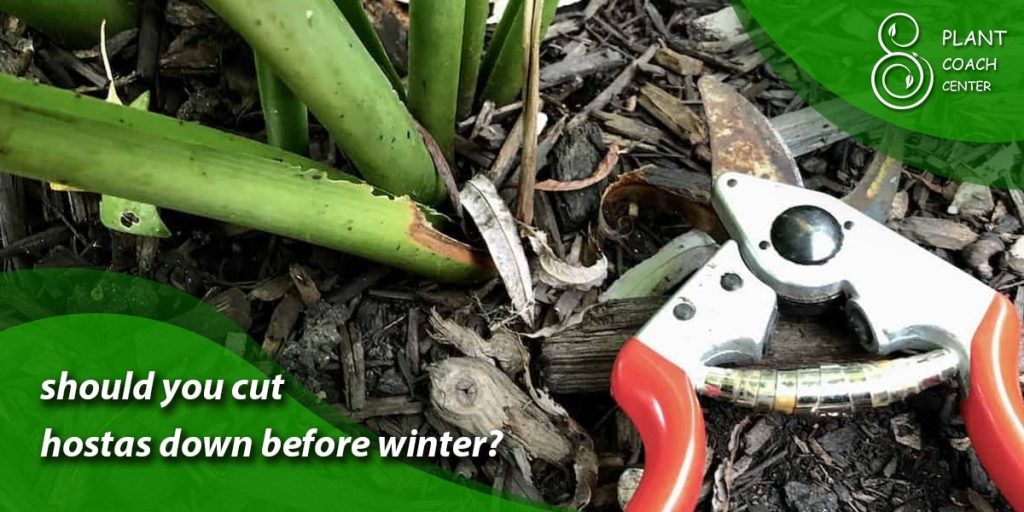
Divide and Conquer: Cutting and Transplanting Hostas for Health
In the ever-evolving tapestry of your garden, hostas emerge as both anchors and artists, casting their elegant foliage and sculptural forms. Yet, as seasons pass and these botanical gems flourish, they might eventually outgrow their allotted spaces. This is where the art of division and transplantation comes into play—a horticultural dance that nurtures both the hostas and the garden’s harmonious composition.
The Case for Division: Renewed Vitality and Abundant Growth
When left undisturbed for years, Hostas can become crowded and show signs of decreased vigor. Leaves may grow smaller, flowering may diminish, and the plant’s health might suffer. This is where division steps in as a remedy. By dividing hostas, you hit the refresh button on their growth cycle. You’re allowing them more space, nutrients, and light, encouraging lush, vibrant leaves and abundant flowers.
Choosing the Right Time: Spring or Fall Division
Dividing and transplanting hostas should ideally be done during their active growth phases, either in the spring or early fall. Spring division is favored by many gardeners as it allows the divided plants ample time to establish their roots before the heat of summer. Fall division can also be successful, provided you do it well before the first frost, allowing the plants to settle in before winter’s chill.
The Division Process: A Step-by-Step Guide
Prepare the Soil: A few weeks before division, water the hostas well to ensure they are hydrated. This makes it easier to separate their root systems.
Digging Up the Hosta: Carefully dig around the plant, preserving as much of the root system as possible. Gently lift the plant out of the ground.
Separating Clumps: Use a sharp knife or spade to divide the clump into smaller sections. Each section should have healthy roots and a portion of leaves.
Replanting: Choose new locations for the divided sections, ensuring they have enough space and suitable soil conditions. Dig holes, place the cells, and backfill with soil.
Watering and Mulching: Water the transplants thoroughly to help settle the soil around their roots. Adding a layer of mulch can help retain moisture and protect the newly planted divisions.
Benefits Beyond Aesthetics: Long-Term Plant Health
The benefits of dividing and transplanting hostas extend beyond aesthetics. Adequately spaced and nurtured hostas are less susceptible to diseases and pests. Improved air circulation prevents moisture buildup and fungal issues. Moreover, the rejuvenation brought about by division can extend the lifespan of these captivating plants, allowing you to enjoy their beauty for years to come.
A Symphony of Growth and Renewal
As you embark on the journey of dividing and transplanting hostas, you’re participating in a symphony of growth and renewal—a process that mirrors the essence of a garden itself. By wielding your spade with care and thought, you’re crafting a harmonious landscape where hostas thrive, the garden flourishes, and nature’s rhythms find their resonance.
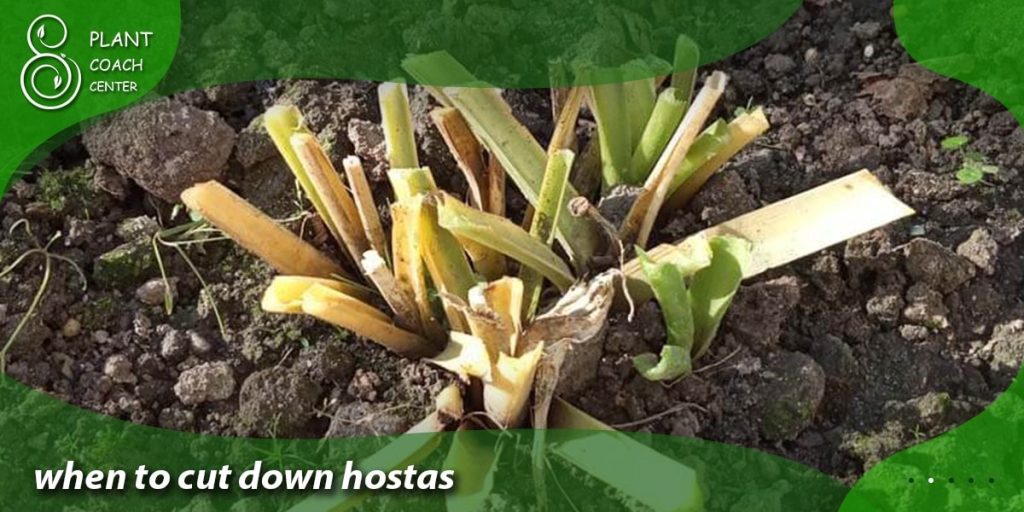
Conclusion
As the seasons cycle and the garden transforms, the art of pruning hostas reveals itself as a harmonious partnership with nature. From understanding the nuances of their growth cycles to mastering the delicate timing of cuts, we’ve explored the multifaceted dimensions of hosta care. Whether trimming in preparation for winter’s embrace, fostering spring’s resurgence, or preventing pests and diseases, each pruning stroke is a testament to your role as a steward of the garden’s beauty and vitality.
So, as you embark on this journey of nurturing, remember that the wisdom of when and how to trim hostas transcends mere technique—it’s an ode to the symphony of life that unfolds in your green sanctuary. For more insights on gardening and plant care, visit PlantCouchCenter.com, where our community of enthusiasts embraces the artistry of cultivation.


